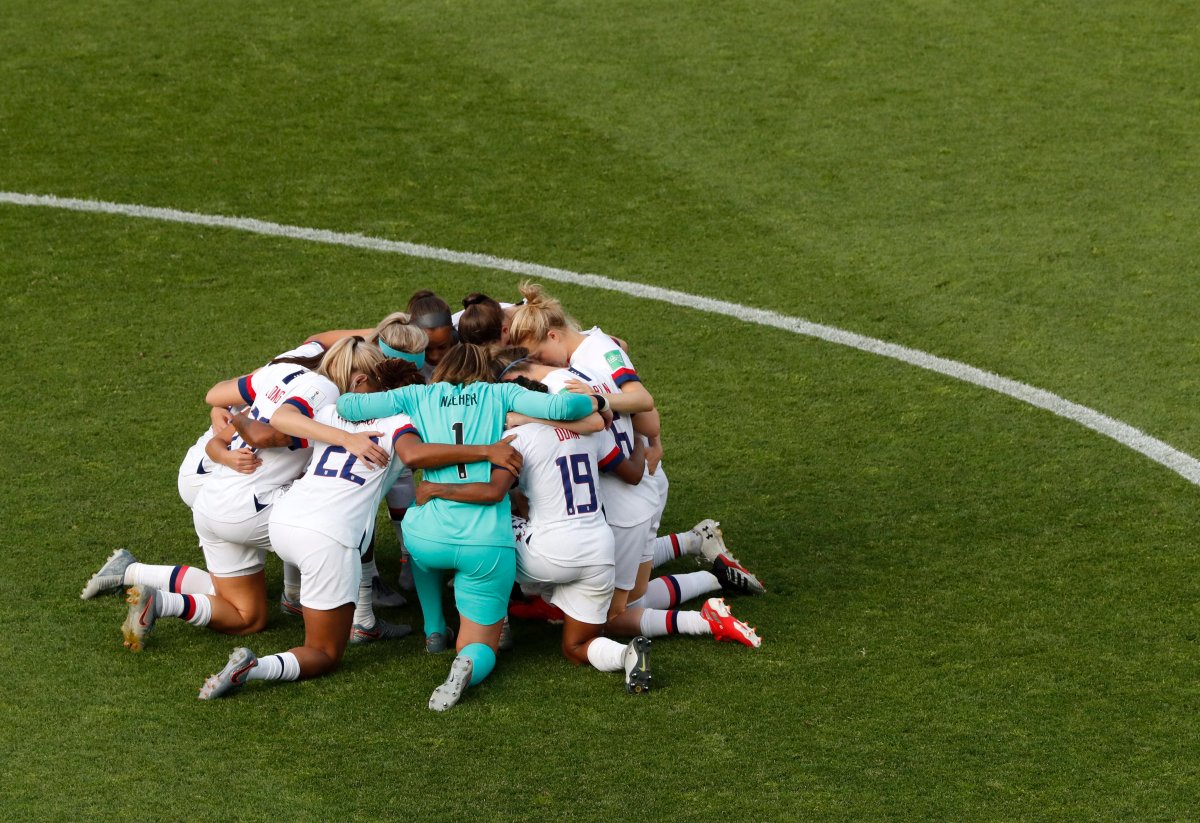A highly-anticipated Women’s World Cup match is running the bill up for fans and leaving players waiting for their piece of the pie.

The United States takes on France on Friday in the quarterfinals of the FIFA Women’s World Cup in an event that’s shaping up to be a sought-after sporting event.
Friday’s quarterfinal game
On Friday, the most expensive available pair of tickets listed on StubHub for the U.S-France match sat at 10,000 euros (nearly C$15,000) apiece, before fees. The lowest available ticket was listed as 220 Euro (C$327) each.
In comparison, tickets for the quarterfinal match between Italy and the Netherlands on Saturday are being resold for as low as 58 euros (C$86) and as high as 199 euros (C$296).
Fans looking for resale tickets for the Germany and Sweden game on Saturday can scoop up tickets for a meagre 5 euros (C$8) or 125 euros (C$185) if you’re feeling lavish.
In some ways, the price jump for the U.S.-France game may come as no surprise. Both teams are considered favourites in the league and have strong fan bases that are willing to travel to see games.
Location may also play a role. The game is set to take place at the Parc des Princes, a historic football stadium that is beloved by fans and rests in the already-pricey Paris, France. The stadium has a capacity of 47,929.
But the hype may also speak to the growing fan base for women’s soccer.
WATCH: Soccer players cry foul over artificial turf at Women’s World Cup
Rise of women’s soccer

Get breaking National news
Long before the tournament began, organizers told a local France station that they were taken aback by presale numbers.
According to a report by the Wall Street Journal, the U.S. women’s soccer games collected almost US$1 million more in revenue than the men’s between 2016 and 2018.
And with a record like the U.S. team has, the hype is not without merit.
The U.S. women’s team is the defending champion and a three-time World Cup winner. The men have never taken home the gold nor did they qualify for the 2018 tournament.
So far this season, the U.S. team has already broken records for the most goals in a Women’s World Cup game with a 13-0 defeat of Thailand in the opening round of the tournament.
The national team’s highly anticipated Friday game against France only accentuates the growing glory.
But there’s a snag in the success.
Soccer players on national women’s teams around the world have been fighting to be paid like their male counterparts for years.
Fight for equal pay
Back in March, players on the U.S. women’s team filed a lawsuit alleging “institutionalized gender discrimination” against the U.S. Soccer Federation (USSF). The players are seeking equitable pay – salary on the same scale as the men’s team.
The USSF has said that pay for players on men and women’s teams aren’t comparable because they are negotiated by separate unions. While most of the collective bargaining agreements for both teams are private, the USSF said in court documents that the decisions are made for “legitimate business reasons and not for any discriminatory or other unlawful purposes.”
At this point, the claim is in mediation.
This year, FIFA doubled the prize money for the women’s league to $30 million. The winning team will earn $4 million from that pool.
While it sounds hefty, it is pale in comparison to the men’s league. Last year, approximately $38 million was handed to the winning team from an overflowing $400-million pool.
Critics weren’t impressed with the increase.
The global footballers union acknowledged FIFA’s “willingness” to make improvements, but said that the changes “actually signify an increase in the gap,” calling it a “regressive trend that appears to contravene FIFA’s statuary commitment to gender equality.”
While prize money for men’s and women’s World Cups have increased over the years, the gap has remained virtually unchanged. For example, in 2007, the German women’s team took home $1 million, while the Italian men’s team took home close to $20 million.
According to a recent analysis by The Guardian, World Cup bonuses offered by U.S. Soccer in collective bargaining agreements operate with the same sort of disparity. Bonuses are awarded to players as they advance through different rounds and women perpetually receive less.
The winnings and bonuses are ultimately handed by FIFA to the national federations, not to team members. So it is up to the federation to choose how much the players get and where other portions of the winnings go.
WATCH: Christine Sinclair is on the verge of making soccer history

FIFA revenue
FIFA generated more than $4.6 billion in revenue in 2018. While part of that revenue comes from ticket sales and hospitality rights — $712 million between 2015-2018 — FIFA says much of the money is distributed to event-related expenses and soccer development projects around the world.
The lawsuit between the players and federation may be in mediation, but it’s possible it could go to trial after the World Cup ends on July 7. Recently, FIFA told the BBC that it plans to invest $400 to $500 million into the women’s game over the next three years.
In the meantime, the players seem to be focusing on a silver lining.
U.S. women’s team star Megan Rapinoe, when asked about what she hopes for Friday’s big match, had another set of choice words for reporters.
“Hopefully, a complete spectacle,” she said. “I hope it’s just a total sh*tshow circus.”
— With files from Associated Press and Reuters




Comments